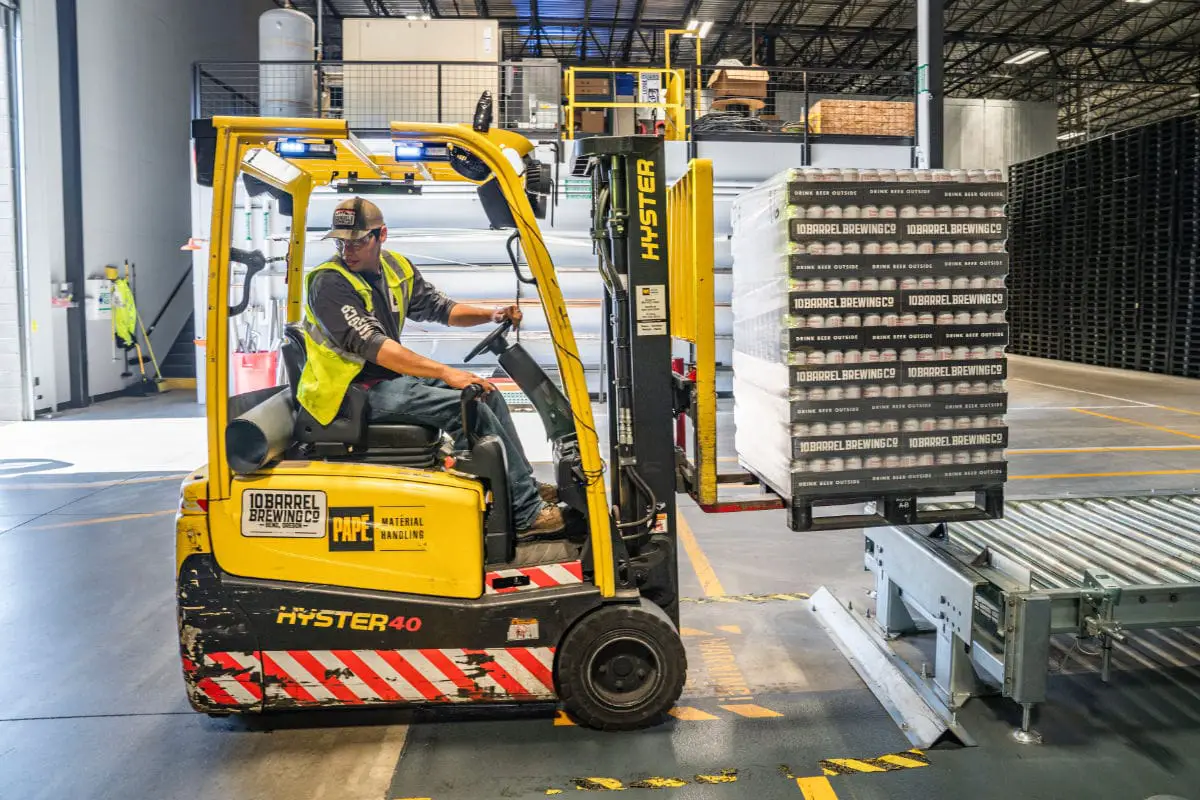The warehouse, is one of the building blocks of the global economy. All large-scale manufacturing, packaging, labeling and shipping goes through warehouses. With supply chains still struggling to recover from COVID-19, more drastic changes are necessary to get the economy back on track.
Estimated reading time: 5 minutes
Let’s take a glimpse into the warehouse of the future and see how today’s business leaders are improving their operations for a better tomorrow.
Artificial Intelligence Getting Smarter

Artificial intelligence is the key to making warehouses more efficient in the digital age. Human labor has limits, but machine learning algorithms never stop absorbing new information and optimizing their job performance, no matter how small the task. Relying on predictive analytics, AI has already proven its effectiveness in many warehouse applications:
- Inventory management: AI software excels at analyzing large amounts of inventory data, noticing patterns and making accurate demand forecasts, helping warehouse managers organize their inventories accordingly.
- Workforce planning: AI software can analyze each employee’s performance and determine the best task assignments and schedule adjustments. Warehouse managers can put their workers in the best positions to succeed and get the most out of their limited human resources.
- Route optimization: AI uses a process called “telematics” to study its environment and optimize routes, whether it’s a forklift in a warehouse or a truck delivering supplies. Telematics accounts for many factors, including distance, traffic conditions, expected fuel consumption, vehicle capacity, delivery times and the employee operating the vehicle.
- Quality control: AI algorithms use image recognition to anticipate product issues and pinpoint manufacturing deficiencies, preventing defects from occurring in the first place. These insights reduce warehouse waste and improve overall product quality.
- Fraud detection: AI fraud detection software constantly tracks online activity, identifying security vulnerabilities and suspicious transactions before they lead to significant financial losses or data breaches.
Overall, AI adoption remains at 55%, but two-thirds of surveyed companies plan on ramping up their AI investments in 2024 and beyond.
While AI is taking over warehouse analytics, the Internet of Things (IoT) is improving warehouse connectivity with various devices. Radio-frequency identification (RFID) tags and sensors can track individual units and help managers organize their inventories. They can even monitor environmental factors for temperature-sensitive products like food and medicine.
These sensors also monitor equipment and the workplace as a whole, tracking their “vital signs” and making maintenance suggestions. For example, the IoT can identify unsafe working conditions based on temperature changes, air quality or hazardous materials. For equipment, it can monitor specific parts and make predictive maintenance suggestions.
Visibility is crucial for effective warehouse management, but humans can’t be everywhere at once. The IoT provides constant visibility in the warehouse and every other link in the supply chain. Businesses can track their shipments in real-time, deploy their assets with greater accuracy, prevent losses and keep customers happy.
Automated Robots Plugging the Labor Gap

Lack of skilled labor is the biggest problem facing warehouses today. The U.S. warehousing sector is on pace to have 2.1 million unoccupied jobs as early as 2030. Artificial intelligence has allowed automated robots to thrive in this setting, playing crucial roles in many industries, from automobiles to food manufacturing.
These robots typically take two forms — automated guided vehicles (AGVs) and automated mobile robots (AMRs). A growing number of robots use graph-based path planning to stay on task and deviate from their assigned paths if they identify an obstruction.
This new level of independence allows AGVs and AMRs to perform a variety of jobs with minimal human supervision:
- Pick-and-placing
- Packaging
- Material handling
- Loading and unloading
- Palletizing and depalletizing
- Product assembly and inspection
- Painting
- Welding
- Drilling
- Bending
- Cutting
- Dispensing
Along with AGVs and AMRs, a handful of other robot varieties are proving their value in a warehouse setting. Automated storage and retrieval systems are the most influential, precisely moving products throughout the facility without human labor. If AS/RS is widely adopted, forklift accidents and inventory damage could cease to exist.
Self-driving vehicles are also taking over operations in the confined spaces of warehouses. Businesses can deploy various autonomous alternatives to create a safer work environment. Autonomous and semi-autonomous forklifts, pallet jacks, walkie stackers, telehandlers and drones are now available.
Meanwhile, some collaborative robots or “cobots” will continue to work alongside human employees. These robots help depleted workforces pick up the slack on menial tasks, such as sorting, packaging and loading inventories.
No matter what task they’re assigned to perform, robots work toward the same goal of maximizing efficiency and minimizing costs. Some companies have reported a sixfold increase in efficiency after entrusting their daily operations to automated robots. Robotics investments topped $2 billion in the U.S. in 2023 and continue to increase.
Looking Ahead
Some barriers will prevent warehouses of the future from becoming completely reliant on AI and robotics. Integration costs are the first obstacle. Researching, developing and updating these technologies is an expense that most small to mid-sized businesses can’t afford. Robotics is only just starting to accommodate smaller manufacturers on a local level.
The other obstacle is negative public perception. A 2023 survey found that 66% of Americans are afraid of fully autonomous vehicles. Millions of people could lose their jobs to robots in the future, so there’s always going to be an underlying conflict.
Human Labor and Automation Will Coexist in the Warehouse of the Future
Based on these factors, the most likely outcome is a balance of human labor and automation in the warehouse of the future. Robots can make operations safer, more efficient and cost-effective, but they can’t replicate the human side of business.
Expect humans to remain the majority of the workforce while AI provides analytics, and robots assist with time-consuming tasks.
What do you think of the warehouse of the future? You may comment by using the social media buttons below. Share on your favorite social media site and tag us on Facebook, X, MeWe, and LinkedIn. Or join our Telegram channel here.
In some of our articles and especially in our reviews, you will find Amazon or other affiliate links. As Amazon Associates, we earn from qualifying purchases. Any other purchases you make through these links often result in a small amount being earned for the site and/or our writers. Techaeris often covers brand press releases. Doing this does not constitute an endorsement of any product or service by Techaeris. We provide the press release information for our audience to be informed and make their own decision on a purchase or not. Only our reviews are an endorsement or lack thereof. For more information, you can read our full disclaimer.










